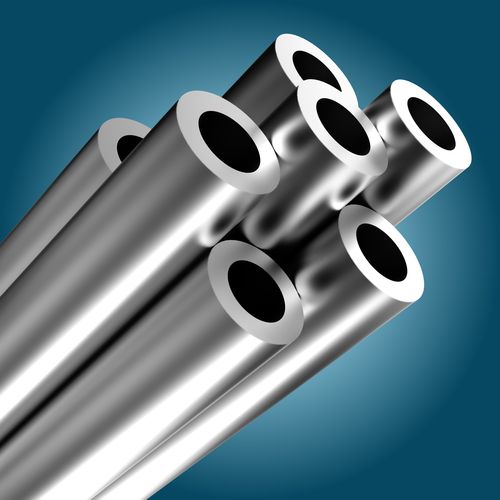Stainless steel objects can be seen in everywhere in our daily lives. This material has become part of modern society, from medical instruments and kitchenware to large architectural buildings. Stainless steel is a very popular material due to its corrosion resistance, durability, and aesthetic appearance. While it has beneficial properties, do you even wonder whether all stainless steels are magnetic?
This article will discuss what makes stainless steel magnetic, which stainless steel is magnetic or not, and why stainless steel magnetism is important. It will also discuss the magnet test and help you choose whether you want a magnetized or unmagnetized stainless steel for your project.
Let’s dive in!
Are All Stainless Steel Magnetic?
If you ask this question to someone, you can get different responses. This question has no definite answer. Due to its iron content, many people believe that this material is magnetic. There are also other people who believe that stainless steel is completely non-magnetic.
The answer to this question is yes and no. Depending on its type, a stainless steel alloy can be magnetic or non-magnetic.


How Does Stainless Steel Become Magnetic?
There are two criteria that must be met including:
- It should contain iron in its composition.
- It has a martensitic and ferritic crystal structure.
Since stainless steel belongs to steel metal, iron is commonly included in their chemical composition. Stainless steel alloys composed of iron and other elements are typically magnetic. However, it can become non-magnetic if it has an austenitic crystal structure.
Types of Magnetic Stainless Steel

Ferritic stainless steel contains huge amount of ferrite which is a compound of iron and other elements. This ferrite crystal structure composition makes the stainless steel magnetic. However, it has a weak magnetic pull. This stainless steel material includes common grades such as:
- 409, 430, 430F, F20S, F18MS/444

This stainless steel has chromium in its chemical composition. However, it doesn’t contain any nickel. Martensitic stainless steel can become a ferromagnetic material if iron is present in its chemical composition. Thus, making it magnetic. Some grades of this stainless steel include:
- 410, 416, 420, 431, 440A, 440B, and 440C

Duplex stainless steel has the combined properties of ferrite and austenite types. However, ferrite is a larger component than austenite present in the composition. This means that this stainless steel is magnetic. Common grades of this stainless steel include:
- 2101, 2304, 2205, 2507, and 2507CU.
Types of Non-Magnetic Stainless Steel

Due to the large amount of nickel in its composition, austenitic stainless steel is classified as non-magnetic. These are commonly used for the production of pharmaceutical equipment, automotive trim, kitchen equipment, appliances, and more. Common grades of these stainless steels are:
- 301, 301L, 301LN, 302HA, 303, 303Se, 304, 304L, 304H, 310, 310S, 310H, 316, 316L, 316H, 321, 321H, 347, 253MA, and 904L.
Why Stainless Steel Magnetism is Important?
Magnetism is important since it can be essential in a specific industry or application that requires magnetic stainless steel. There are several reasons why magnetism is important in stainless steel including:
- Magnetism helps in identification and sorting of stainless steel types. The magnetic properties can help in differentiating the various stainless steel grades. Thus, it can be accurately sorted and categorized.
- It also helps in indicating whether a certain stainless steel alloy contains ferrite. The presence of ferrite allows the stainless steel to offer corrosion resistance and high strength. Therefore, by using magnetism to identify the level of ferrite present in the stainless steel, manufacturers will know that they used the correct grade for their projects.
- Magnetism also plays a crucial role in various assembly processes, including automotive and electronic manufacturing. During the production processes, magnetized fixtures and equipment can hold magnetic stainless steel components securely. Therefore, manufacturers can ensure easy operation, production efficiency, and increased productivity.

Magnet Test
When you are out to purchase a stainless steel, you can bring a magnet to test the material whether it is magnetic or not. Non-magnetic stainless steel tends to have higher quality compared to magnetic, which is more expensive. However, magnetic stainless steel can also be extremely useful depending on applications and environment.
Conclusion
Depending on its composition, a stainless steel can be magnetic or not. There are specific types of stainless steel fabrication that are magnetic such as ferritic, martensitic, and duplex. On the other hand, austenitic type of stainless steel is non-magnetic.
Understanding stainless steel magnetism entails various benefits since it can help certain industries and applications like construction and manufacturing of everyday household items.
It is important that you consider your specific needs before deciding whether you will choose a magnetic or non-magnetic stainless steel. This depends on different factors such as intended use, corrosion resistance, durability, and more.
To help you choose the right stainless steel fabrication material, it is a best option to always consult with an expert. An expert manufacturer can help you find the right grade based on your requirements.



